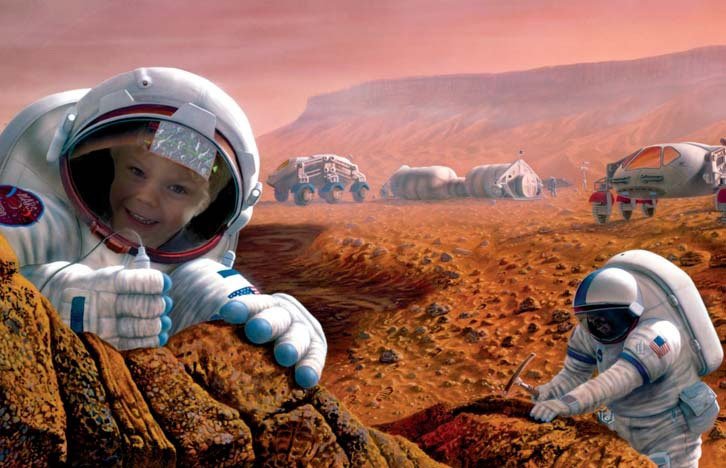On a whim one morning, I showed my 3-year-old son NASA’s 2014 special issue on Mars. The content was way above Liam, of course, but the breathtaking illustrations were right at his level. I paged through the issue, pointing at pictures and explaining little things as I went.
Then I showed him the mosaic of photos Curiosity shot of Mount Sharp. “That is a big, big mountain!” Liam exclaimed. I told him that a robot named Curiosity was climbing all the way to the top of that mountain. Maybe he didn’t understand the part about the robot, or maybe he just got caught up in the idea of climbing. But he turned to me with big round eyes, pointed a hesitant finger to his chest, and said, “Me?!”

That, right there, is all the argument I’ll ever need for a human-crewed space program.
Don’t get me wrong: robots are super cool. They explore new vistas, perform chemistry experiments, and relay data we can’t get by ourselves just yet. The images captured by rovers and orbiters alike inspire the imagination. Still, there’s nothing quite like climbing that mountain yourself.
The question is, how do we get to that mountain? A 3-year-old can lend you unbridled optimism for the future, but reality always intrudes. After all, NASA has struggled for a clear goal ever since it reached the Moon. In a recent presentation to the American Astronomical Society, space historian and policy expert John Logsdon pondered that sense of drift as he described our current position between a rock and a hard place.
First, there’s the question of resources. President Kennedy’s 1961 directive to land a man on the Moon “before the decade is out” came with an immediate 89% increase in NASA’s budget. In the mid-1960s, the agency’s funding peaked at roughly 20% of all non-defense, discretionary spending. But during Nixon’s tenure, that percentage plummeted to 6%, and in this century it has remained between 3% and 5%.
Then there’s the question of destination. Low-Earth orbit was the only place humans went post-Apollo, though many hoped to press on to Mars sometime in the future. Presidents have also issued directives to establish a Moon colony or visit a near-Earth asteroid. But their budgets never backed those grand visions. So there’s our rock and our hard place: nobody wants to give up our ambitious goals, but we don’t have the financing to achieve them.
There are potential ways out of this tight spot, however. Logsdon argued that NASA, as a source of alternative funding, should refocus on international coalitions, challenging as they may be to establish and manage.
Another solution might be to combine NASA’s vision and technical prowess with commercial sensibilities. In the discussion following Logsdon’s talk, Martin Elvis (Harvard-Smithsonian Center for Astrophysics) suggested that private ventures such as those trying to develop space tourism or asteroid mining should help slash launch costs, a major expense of spaceflight, while NASA continues to reduce the technical risks.
